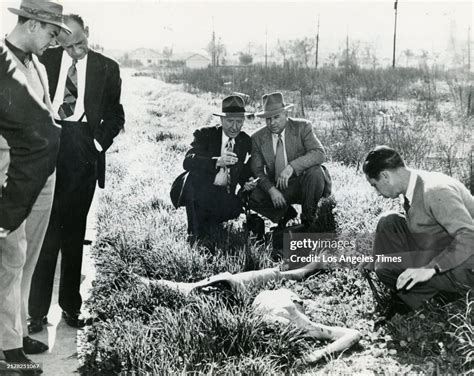The fear of flying, also known as aviophobia or aerophobia, is a common phobia that affects millions of people worldwide. It’s a complex issue, often rooted in a combination of factors, including lack of control, fear of heights, and preocupation with safety. However, with the right strategies and mindset, it’s possible to manage this fear and make flying a more comfortable and enjoyable experience. In this article, we’ll delve into the world of fear of flying, exploring its causes, symptoms, and most importantly, providing you with 10+ secrets to ensure smooth landings and a more relaxed flight experience.
Understanding the Fear of Flying
Before we dive into the secrets, it’s essential to understand the nature of the fear of flying. This phobia can manifest in different ways, from mild anxiety to full-blown panic attacks. Some people might fear the takeoff, while others might be anxious about turbulence or landing. Understanding your specific fears and triggers is crucial in addressing them effectively.
The Psychology Behind Fear of Flying
The fear of flying is often associated with a lack of control and trust in the aircraft and its crew. The enclosed space of an airplane can exacerbate feelings of claustrophobia, and the inability to escape or move freely can heighten anxiety levels. Additionally, media coverage of aviation incidents, though rare, can fuel fears and reinforce negative perceptions about flying safety.
Secrets to Smooth Landings
Managing the fear of flying requires a combination of preparation, knowledge, and strategies to cope with anxiety. Here are over 10 secrets to help you navigate your fear and ensure smoother landings:
Education is Key: Learning about flying, how planes work, and safety measures can significantly reduce fear. Understanding that flying is the safest mode of transportation can help alleviate concerns.
Breathing Techniques: Deep breathing exercises can help calm the nervous system. Practices such as diaphragmatic breathing can reduce anxiety and promote relaxation.
Progressive Muscle Relaxation: This technique involves tensing and relaxing different muscle groups to release physical tension and promote relaxation.
Visualization: Imagining a safe and successful flight can help reduce anxiety. Visualizing the flight from start to finish, including a smooth landing, can be particularly helpful.
Positive Self-Talk: Encouraging positive internal dialogue can help manage fears. Instead of focusing on worst-case scenarios, practice affirmations that promote confidence and calmness.
Fly with a Companion: Having a trusted friend or family member with you can provide emotional support and distraction from fearful thoughts.
Stay Occupied: Bringing a book, puzzle, or listening to music can help distract from anxiety-provoking thoughts and keep your mind engaged.
Choose Your Seat Wisely: For some, sitting over the wing, where turbulence is typically less pronounced, can be comforting. Others might prefer a window seat to have something to focus on outside.
Consider a Fear of Flying Course: Many airlines and organizations offer courses or workshops specifically designed to help individuals overcome their fear of flying. These can provide valuable strategies and support.
Consult a Professional: If your fear of flying is severe and interferes with your daily life or travel plans, consulting a mental health professional can be beneficial. Therapists can offer personalized strategies and techniques, such as cognitive-behavioral therapy (CBT), to manage your fear.
Stay Hydrated and Avoid Caffeine: Dehydration and caffeine can exacerbate anxiety. Drinking plenty of water and avoiding stimulants can help keep anxiety levels down.
Use Technology to Your Advantage: There are numerous apps and online resources available that offer guided relaxation techniques, flight tracking, and turbulence forecasts. Utilizing these can provide a sense of control and preparation.
Implementing Your Strategy
Implementing these strategies requires patience and practice. It’s essential to start preparing well before your flight, whether through education, breathing exercises, or seeking professional help. Each small step towards managing your fear can lead to significant improvements in your flight experience.
Conclusion
Overcoming the fear of flying is a journey, and it’s one that requires understanding, patience, and practice. By educating yourself, employing relaxation techniques, and seeking support when needed, you can manage your fears and ensure smoother landings. Remember, flying is a safe and efficient way to travel, and with the right mindset and strategies, you can enjoy your flights and arrive at your destinations feeling more relaxed and confident.
FAQs
What is the safest part of a plane?
+The safest part of a plane is often debated, but statistically, the area over the wing is considered to experience less turbulence, potentially making it a preferable option for those seeking a smoother flight.
Can fear of flying be completely overcome?
+While it's possible to significantly manage and reduce the fear of flying, complete elimination of the fear can vary from person to person. With the right strategies, support, and practice, many people are able to fly comfortably and confidently.
What role does turbulence play in the fear of flying?
+Turbulence is a common concern for those with a fear of flying. Understanding that turbulence is a normal part of flying and that planes are designed to withstand it can help alleviate fears. Additionally, advancements in weather forecasting and flight planning have significantly reduced the risk associated with turbulence.
In conclusion, managing the fear of flying is about empowerment through knowledge, strategy, and support. By embracing these secrets and continuously working on your fear, you can transform your flying experiences into comfortable and enjoyable journeys. Remember, the sky is not the limit; it’s just the beginning of your journey to overcoming the fear of flying.



